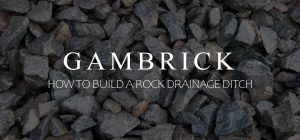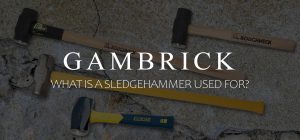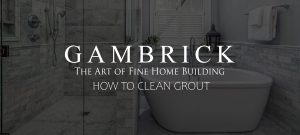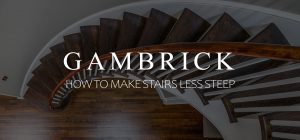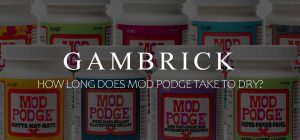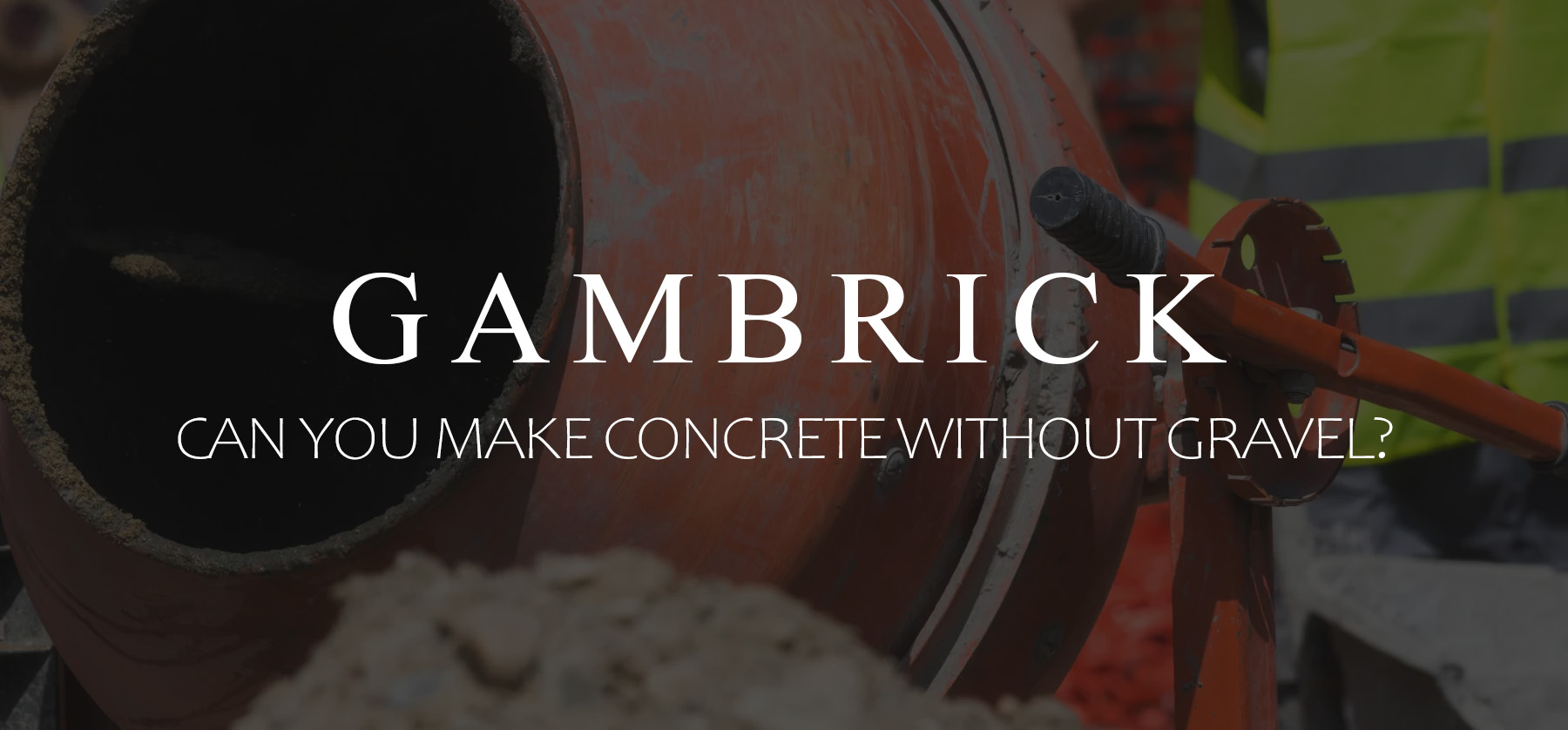
Can You Make Concrete Without Gravel?
Concrete is a composite material made by mixing sand, stone (gravel), cement (Portland) and water. I’ve been a mason for over 25 years and can tell you from firsthand experience, the best standard concrete mix ratio is 1 part cement, 2 parts sand and 3 parts gravel which creates a 4000 psi concrete. This makes a concrete with very high compressive strength and durability, but it’s not very sticky so you shouldn’t use it to bond new concrete to old concrete or other materials.
Each ingredient is very important. Sand make the concrete gritty and provides some strength. Cement is the active ingredient that becomes a paste when mixed with water, binding all the materials together. It then dries and hardens during a process called curing which takes about 28 days to complete. Stone is what gives concrete it’s extremely high compressive strength. Water activates the cement, which starts the chemical reaction and binds the ingredients together.
Without all 4 ingredients concrete is impossible to make. So no, you can’t make concrete without gravel. A mixture of sand and cement with water is called mortar.
When wet concrete dries it becomes extremely strong, dense, durable, and porous. To keep it in good condition, use a sealant to fill the pores and keep water out.
Understanding Cement, Concrete & Mortar
Concrete, cement and mortar often get confused for one another because they’re very similar products. However they’re also very different and shouldn’t be used in place of one another.
Concrete
Concrete is a mixture of cement, sand and gravel. The amount of each ingredient used in the mix is called the concrete mix ratio. For example a 1,2,3 mix mean 1 part cement, 2 parts sand and 3 parts gravel. This creates a 4000 psi concrete. But if you change the mix ratio to 1,3,3 you get a 3000 psi concrete. Because of the stone it contains, concrete has a very high compressive strength and is used in structural projects like foundations and walls.
- Made of cement, sand & gravel.
- A strong structural building material with high compressive strength.
- Used for building foundations, slabs, footings, driveways, roads, etc.
- Strength is measured in psi (pounds per square inch).
Mortar
Mortar is a mix of cement, hydrated lime and sand. By removing the stone you lower the strength of the material but increase its stickiness. This makes it better as a binding material for stacking brick, stone and block or laying tile. Because mortar doesn’t contain gravel its compressive strength is much lower so it can’t be used as a structural material.
- Made of cement, hydrated lime and fine sand.
- Used to bond together brick, stone and block or lay tile and stone.
- Not as strong as concrete.
- Comes in 3 main types: M, S and N. Each is rated a different strength.
Cement
Cement is the active ingredient in both mortar and concrete. It’s a hydraulic material which means it reacts with water. When cement mixes with water it becomes a paste that later dries, hardens and grows strong. This process is called curing and typically takes around 28 days to complete.
- Made from limestone, silica sand, iron ore, clay, slate and shale.
- Creates a paste when mixed with water that later hardens bonding together any ingredients its mixed with.
- Used to make concrete and mortar.

What Is Aggregate?
Cement is made into different materials when combined with an aggregate. The two most common form of aggregate are sand and stone. Mortar is a mix of cement, sand and lime. Concrete is a mix of cement, sand and stone.
Both concrete and mortar contain aggregate. They’re a very important ingredient because they pass their strengths onto the new material. Sand makes mortar and concrete gritty. This helps it stick and bind materials together. Stone is what gives concrete it’s high compressive strength.
Aggregates come in two main types: fine aggregate and coarse aggregate.
- Fine aggregates are small such as sand or fine gravel. They’re usually smooth and rounded. These aggregates are very small and create a finer material that’s easier to spread.
- Course aggregates are larger and often jagged. They’re used to make high strength concrete mixes. The concrete made using coarse aggregate is denser, thicker and harder to trowel smooth. Crushed concrete, gravel and rocks are all examples of coarse aggregate.
The purpose of aggregate is to strengthen the concrete or mortar, to change its texture and appearance. Changing the aggregate also changes the materials strength, appearance and texture.
Coarse aggregate strengthens concrete because large rocks are harder to damage, break, and erode. But coarse aggregate concrete mixes are harder to trowel smooth. This is why we use the strongest mixes, with the biggest aggregate, in foundations and footings. Finished concrete projects like driveways and sidewalks use medium sized aggregate which are easier to trowel.
Fine aggregate lowers the strength of the mix. Smaller aggregate creates mortar instead of concrete. The strength of the mix gets lower as the aggregate shrinks but it gets smoother and easier to spread.
Does All Concrete Have Rocks In It?
Yes, to make concrete you need sand, cement and stone. You can’t make concrete with only sand and cement. Mixing sand and cement creates mortar.
Without aggregates like gravel and stone you can’t make concrete. It’s the aggregate that gives concrete its high compressive strength. Without it the material won’t be strong enough for structural projects like walls, foundations and footings.
When you mix sand and cement with water you get a type of mortar. It’ll be very low in strength and too weak for structural applications. It’s also not a great material for binding brick and stone without hydrated lime. To make a strong mortar mix you need cement, sand and some lime.
Like concrete, you can alter a mortar mix by adjusting it’s ingredients and ratios.
There are 3 main types of mortar, M, S and N. Each has a different mix ratio which creates a mortar with slightly different properties.
Rapid Set makes a high strength structural repair mortar. It’s very strong and as close as you can get to making concrete without gravel. However it’s still not strong enough to be used for structural projects like walls and footings. Because it has high strength (for a mortar) and low shrinkage, it works really well for wall and floor repairs, mortar beds and other masonry projects.
Rapid set mortar mix can be applied up to 6″ thick and has a very fast dry time. This makes it great as a sub-base for setting tile and stone.
Concrete vs Cement vs Mortar
The term “cement” is often used when someone is actually referring to concrete or mortar. Cement truck, cement slab, pouring cement, cement joints or cement bed are phrases that are often used to mean concrete truck, concrete slab, pouring concrete, mortar joints or mortar bed.
Cement is a dry powder and the active ingredient in both concrete and mortar. It’s what binds the other ingredients together to form a new compound.
When making concrete, cement is what binds the sand and stone together. Cement is also used to bind together sand and hydrated lime to form mortar. Without cement, neither concrete nor mortar would be possible.
Understanding the difference between concrete vs cement vs mortar helps you choose the right material for your project.
- Concrete: Used for structural applications like driveways, sidewalks, footings, walls, foundations, slabs, steps, etc.
- Mortar: Used to bind together brick, stone and block. Also used to build mortar beds or stick masonry units to a wall.
- Cement: Used to make mortar and concrete but rarely all on its own.
Does Quikrete Have Rocks In It?
Quikrete makes a variety of products including concrete and mortar. Quikrete concrete mixes all have aggregate stone in them. But Quikrete mortar mixes don’t. Quikrete mortar mixes contain cement, sand and hydrated lime.
Summary: Can You Make Concrete Without Gravel?
Concrete is a composite material made by mixing sand, stone (gravel), cement (Portland) and water. A standard concrete mix ratio is 1 part cement, 2 parts sand and 3 parts gravel which creates a 4000 psi concrete. Each ingredient is very important. Sand make the concrete gritty and provides some strength. Cement is the active ingredient that becomes a paste when mixed with water. It then dries and hardens during a process called curing which takes about 28 days to complete. Cement is what binds the ingredients together to form concrete. Stone is what gives concrete it’s extremely high compressive strength. Without all 3 ingredients concrete is impossible to make. So no, you can’t make concrete without gravel. A mixture of sand, cement and water is called mortar.
Mortar mix is made by combining cement, sand, and water. Mortar doesn’t have very much compressive strength because it contains no gravel. So its not used as a structural material. But it’s still very strong and sticky. Mortar is used primarily as a glue to bind together masonry materials like brick, stone, tile and block.
Mortar also has good water resistance which makes it a great bed for laying tile and stone.
If you have any questions about concrete, email any time.

John Mazzuca | About | More Posts |
Custom Home Builder
John Mazzuca is a custom home designer and builder at Gambrick with over 25 years experience in the construction industry. John has designed, built and/or remodeled hundreds of homes, small buildings, and commercial projects. He writes about business, real estate, home building, and household electronics. His work has been featured in Fox Business, Better Homes & Garden, House Beautiful, and more.
